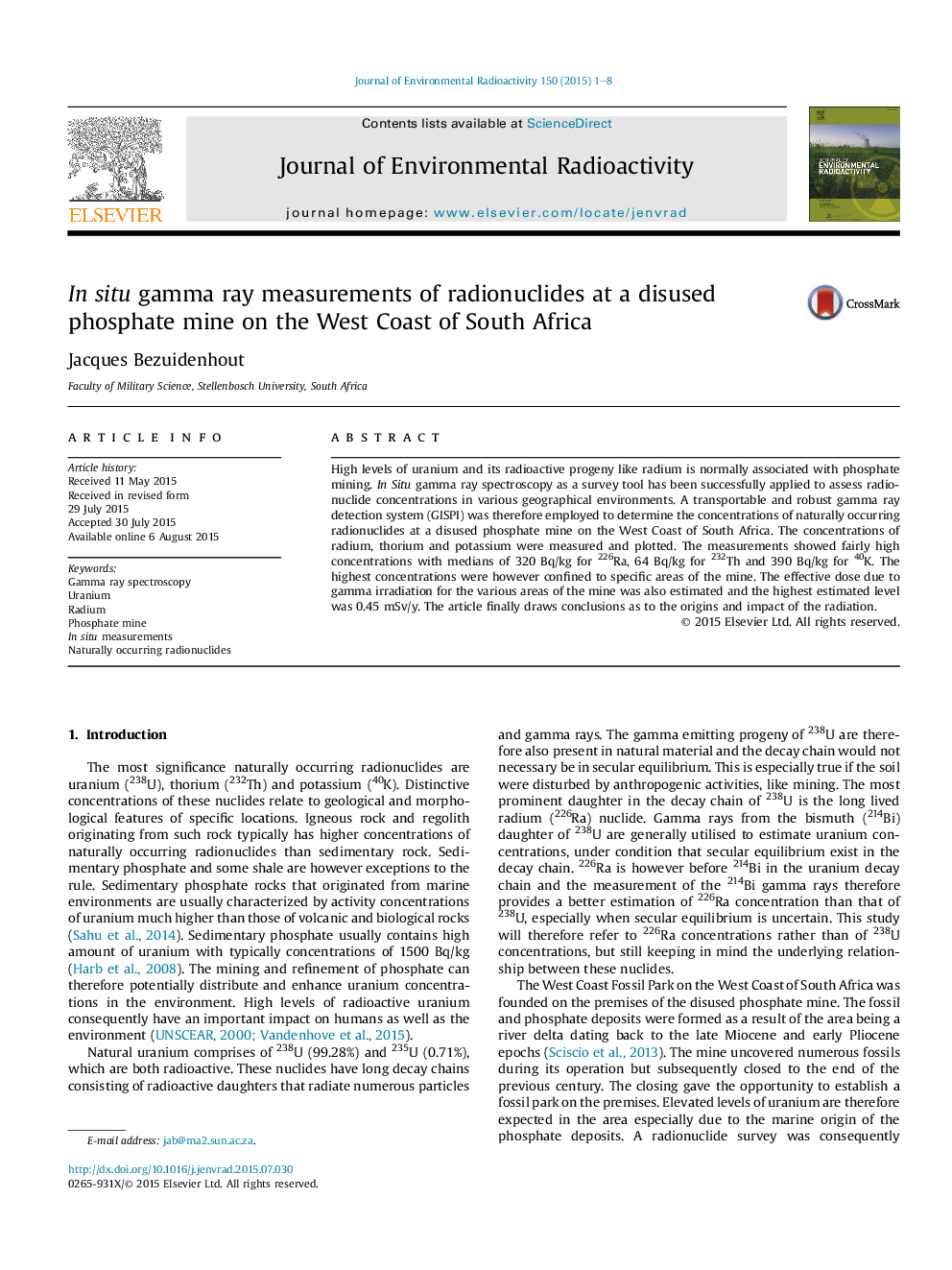| Article ID | Journal | Published Year | Pages | File Type |
|---|---|---|---|---|
| 1737779 | Journal of Environmental Radioactivity | 2015 | 8 Pages |
•A self-developed transportable and robust gamma ray detection system (the GISPI) was employed in the measurements.•A different mathematical analysis method was used.•QGIS was used extensively.•The results is important for current developments in infrastructure and mining.
High levels of uranium and its radioactive progeny like radium is normally associated with phosphate mining. In Situ gamma ray spectroscopy as a survey tool has been successfully applied to assess radionuclide concentrations in various geographical environments. A transportable and robust gamma ray detection system (GISPI) was therefore employed to determine the concentrations of naturally occurring radionuclides at a disused phosphate mine on the West Coast of South Africa. The concentrations of radium, thorium and potassium were measured and plotted. The measurements showed fairly high concentrations with medians of 320 Bq/kg for 226Ra, 64 Bq/kg for 232Th and 390 Bq/kg for 40K. The highest concentrations were however confined to specific areas of the mine. The effective dose due to gamma irradiation for the various areas of the mine was also estimated and the highest estimated level was 0.45 mSv/y. The article finally draws conclusions as to the origins and impact of the radiation.
